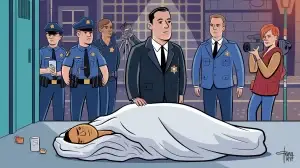Cracking Knuckles Causes Arthritis? Many people believe that cracking knuckles leads to arthritis. However, this is a myth. Cracking your knuckles does not cause arthritis. That’s right, you can keep your joints popping without worrying about developing this painful condition.

While it might be satisfying to hear those loud pops, some studies reveal that this habit doesn’t enlarge your joints or cause arthritis. In fact, experts from the Cleveland Clinic and Mayo Clinic have debunked this common misconception. So next time someone gives you the side-eye for your noisy knuckles, you can confidently crack away.
Some people believe that this habit enlarges the joints or causes arthritis. However, experts from the Cleveland Clinic and Mayo Clinic have debunked this misconception. Now, you can confidently crack away without worrying about developing arthritis.
Although knuckle cracking doesn’t lead to arthritis, it isn’t completely free of repercussions. Chronic crackers could experience reduced grip strength and even potential injuries. For those addicted to the snap, crackle, pop, it might be time to consider these risks and maybe find a quieter habit.
The Popping Symphony: What’s Crackin’?
Ever wondered what’s causing that familiar popping sound when someone cracks their knuckles? It’s all about bubbles and a bit of joint magic. Let’s get into the specifics.
Knuckles: The Stars of the Show
Knuckles, those little joints between your fingers and hands, are the grand maestros behind the symphony of pops. Often subjected to stress, they release nitrogen bubbles trapped within the synovial fluid lining the joints.
When these bubbles pop, it’s like a tiny, personal fireworks show for your fingers.
For some, cracking knuckles is a cherished, if slightly annoying, habit. Scientific studies show this ritual causes no harm to the joints themselves, nor does it lead to arthritis, contrary to popular belief. Although chronic knuckle-cracking may reduce grip strength, it’s generally considered harmless.
All About That Bubble
The popping sound from knuckle-cracking is actually the sound of nitrogen bubbles in the synovial fluid bursting. This process is called tribonucleation. Imagine tiny air balloons forming and then rapidly collapsing in your joints.
This phenomenon, confirmed through MRI imaging, shows that the bubbles form due to the negative pressure created when the joint is stretched. That satisfying pop is essentially your joint’s way of hitting a reset button.
Some people enjoy cracking their knuckles for the sheer pleasure of hearing the noise, while others find it relieves tension and stress. Whether it’s a habit or a nervous tic, it’s all about those marvelous little bubbles doing their thing.
Busting Myths: Arthritis and the Knuckle-Crack Chronicles
Exploring the relationship between arthritis and knuckle-cracking unveils some surprising truths. It’s time to set the record straight and cut through the chatter with some solid, scientifically-backed insights.
Arthritis and Its Comfy Sofa in Joints
Arthritis loves to crash the party in our joints, settling in like an uninvited guest who overstays their welcome. It’s quite the charmer; there are over 100 types, with osteoarthritis being the most popular. It’s caused by the wear and tear of the cartilage cushioning our joints.
No doubt, it leads to some unpleasantries like joint pain and stiffness, making one’s daily hustle a bit of a chore. Intriguingly, joint pain can be triggered by various factors, including injury and obesity, not just by playing bubble wrap with your knuckles.
Cracking Knuckles: Guilty or Innocent?
Ah, the delightful snap, crackle, pop of knuckle cracking. Often accused of causing arthritis, it’s time to investigate. Research indicates that the habit is more annoying than harmful. Contrary to popular belief, cracking your knuckles does not cause arthritis. Indeed, studies, such as those referenced by Harvard Health, show that there’s no confirmed link between the two.
Although it doesn’t invite arthritis to your bones, obsessive knuckle-cracking might lead to other grievances like reduced grip strength. Doctors like those at Mayo Clinic explain that tribonucleation—the formation and popping of bubbles in the synovial fluid—causes that familiar sound, not joint damage.
So, while it’s polite to resist cracking knuckles in meetings or silent chambers, it’s comforting to know this quirk doesn’t fast-track anyone towards arthritis.
Knuckle-Cracking Addicts: Who Does It and Why?
Why do people keep cracking their knuckles? Is it a nervous habit or just a way to pass the time? This section explores the surprising reasons behind this common yet curious behavior and highlights those who simply can’t get enough of that popping sound.
Nervous Tick or Party Trick?
For some, cracking knuckles is as natural as breathing. Stress and nerves often trigger this habit. They find the sensation of releasing tension satisfying, much like squeezing a stress ball. It’s not just about the sound—though many will admit they love that sharp, popping noise.
Consider Jane, who always cracks her knuckles before a big presentation. It’s her way of coping with anxiety. Others might do it without even realizing, turning it into an unconscious nervous habit.
In social settings, some proudly show off their knuckle-cracking skills. It’s their version of a party trick, entertaining (or annoying) friends and family. The key takeaway is that both stress-relief and the desire for attention play significant roles in this habitual behavior.
The Habit Hall of Fame
Who tops the charts in the world of knuckle cracking? Studies show that as many as 54% of people indulge in this habit regularly. Interestingly, there’s no easy way to categorize these “habitual knuckle crackers.” They come from all walks of life, ages, and backgrounds.
Take Dr. Sanj Kakar, an orthopedic surgeon from the Mayo Clinic, who labels people who crack more than five times a day as part of the “habit hall of fame.” From kids trying to impress their peers to adults seeking relief from tight joints, the reasons are as varied as the individuals themselves.
The real question is: why should anyone care? Understanding these motivations can help curb the impulse for those looking to quit and encourage empathy from those around them. Instead of labeling the habit as merely annoying, recognizing it as a stress response or social behavior brings new perspectives to the table.
Let’s Get Technical: The Anatomy of a Crack
Understanding the anatomy behind knuckle cracking involves breaking down the roles of cartilage, ligaments, and synovial fluid, and how negative pressure plays a pivotal part. These elements work together to create that satisfying pop sound many find irresistible.
Behind the Curtains: Cartilage, Ligament, and Synovial Fluid
Inside those knuckles, cartilage acts as a cushion between bones, absorbing shock and allowing smooth movement. Ligaments, those sturdy bands of tissue, bind the bones together, ensuring stability. When someone cracks their knuckles, these structures interact in a fascinating way.
The sound of knuckle cracking is often linked to the manipulation of synovial fluid, which lubricates the joints. When you pull or bend your fingers, you stretch and quickly release this fluid, causing gas bubbles to form and burst within the joint space. This process is known as tribonucleation. Think of it as nature’s little bubble wrap.
This explanation debunks the myth that cracking your knuckles damages the cartilage or ligaments. Instead, the structures largely remain intact and functional. The role of synovial fluid and its bubbling nature takes center stage, showing how this common activity is more science than destruction.
Negative Pressure: Not Just Your Boss’s Attitude
When you crack those knuckles, the joint’s negative pressure is really the culprit behind the sound. It might sound fancy, but it’s simple: this pressure is lower than the surrounding area, leading to the formation of bubbles in the synovial fluid.
Picture it like this: when you pull your finger, you expand the joint capsule, lowering the pressure inside. This decreased pressure causes dissolved gases in the synovial fluid to form bubbles. And pop! There you have it.
The negative pressure creates an air pocket, which causes the bubbles in the synovial fluid to collapse rapidly, producing that unmistakable cracking noise. So, while it may sound a bit alarming, it’s actually a perfectly natural byproduct of basic physics—like a vacuum seal from a bag of chips snapping open.
Repercussions of the Crack: Myths vs. Reality
Many believe that cracking knuckles can cause arthritis. But, is that really true? This section explores the main symptoms people worry about and the sounds they hear.
From Stiffness to Swollen Hands: Decoding Symptoms
People often worry that cracking their knuckles will lead to arthritis, stiffness, or hand swelling. Despite these common fears, scientific studies have shown no direct link between habitual knuckle cracking and arthritis.
Instead, some people might experience slight hand swelling or stiffness after cracking their knuckles frequently. This is generally not harmful and usually resolves on its own. Real issues like inflammation or significant injuries are more likely to result from other activities or underlying health conditions, not knuckle cracking.
Interestingly, the popping sound comes from gas bubbles in the joint fluid, not from damaging the bones or cartilage. So, while the noise might annoy people around you, it’s not a harbinger of doom for your joints.
Cracking vs. Creaking: Sounds of Discomfort?
Let’s not confuse the crisp “pop” of knuckle cracking with other joint sounds like creaking or grinding, which are entirely different animals.
Cracking your knuckles results from a harmless phenomenon called tribonucleation. Here, gas bubbles burst in the synovial fluid.
On the other hand, creaking or grinding noises might indicate joint stiffness or other issues. These sounds are more concerning and may point toward conditions like inflammation. So, if you hear a grinding noise while moving your joints, it’s worth checking with a healthcare professional.
Cracking knuckles, while loud and potentially annoying to others, doesn’t share the same implications as joint creaking noises. Knowing the difference can help alleviate unnecessary worry about harmless habits versus potential health concerns.
The Quest for Supple Joints: Improving Hand Health
Keeping those knuckles in tip-top shape isn’t just about avoiding arthritis. Careful attention to exercise and rest can keep hands feeling supple and strong. Here’s how:
Exercise Your Right… to Exercise
Hand exercises can work wonders for flexibility and strength.
Imagine the soft tissue in your hand as a delicate but responsive machine. It craves movement!
Simple routines like squeezing a stress ball or stretching fingers apart can stimulate blood flow and keep the joints nimble. Try finger lifts and bends, which can easily be done during a coffee break. Even activities like knitting or playing a musical instrument count towards keeping your hands healthy.
Think about it—why let your hands be lazy? Keeping them active prevents stiffness and supports overall joint health. Plus, it’s a fantastic excuse to take mini-breaks from your screen. Trust an orthopedic surgeon: movement is magic for those knuckles.
Rest and Recovery: Give Those Knuckles a Break
Every hard worker deserves some downtime, and your hands are no exception. Rest allows the soft tissue and joints to recover from daily wear and tear.
If you’ve just spent hours typing or gardening, let your hands relax—maybe even give them a gentle massage.
Stress relief methods like warm soaks or using cold compresses can reduce inflammation. It’s exactly what tired hands need. Remember, overdoing hand exercises can be counterproductive.
When your knuckles start feeling like they could use a vacation, listen. Give them the break they deserve to stay functional and pain-free. Balancing activity with rest ensures your hands are always ready for action, without the snap, crackle, and pop of unhappy joints.
Consulting the Pros: When to See a Doctor
We all love to crack our knuckles from time to time, but when should you be concerned enough to see a professional? Knowing the difference between harmless cracking and potential health issues can save you a lot of trouble.
Crossing the Line: Pain vs. Pleasure
Cracking knuckles should ideally be as satisfying as popping bubble wrap. If it’s causing pain, swelling, or any change in the shape of the joint, it’s time to think again.
Some people may experience reduced grip strength due to repetitive knuckle cracking. If that’s you, your hands might be sending out an SOS.
Consider Jane, who couldn’t open jars one day because knuckle cracking had weakened her grip. After visiting the doctor, she found out she needed therapy to regain her hand strength. It’s crucial to listen to your body and act on these signs before they snowball.
Treatment and Relief: When Your Hands Demand Attention
When knuckles crack too much, they might scream for help. Injuries from knuckle-cracking may include joint swelling or even ligament damage. A couple of scare stories have underscored how intensive the habit can be, pushing the limits of our beloved joints.
Visiting a doctor can help identify if something else is going on. Doctors might recommend physical therapy or specific exercises to maintain healthy hands and strong joints. They can offer tips on breaking the habit and preventing further injury.
For instance, Bob found relief and improved his grip strength after implementing exercises his doctor recommended. Keeping your hands healthy isn’t just about quitting knuckle cracking; it’s about proactive care and timely professional consultation.
The Grip of Reality: Strength, Age, and Joint Health

Grip strength changes with age and can reveal much about joint health. Understanding these connections helps manage expectations and maintain joint functionality.
Hold On Tight: Grip Strength and Age Considerations
As folks age, they might notice their grip strength isn’t what it used to be. This change isn’t just nostalgic—it’s influenced by factors like muscle mass reduction and decreased bone density.
A person’s grip says a lot about their overall bodily strength. When grip strength weakens, it not only affects one’s ability to open jars or hold onto railings but also signals broader health concerns. The connection between grip and age extends beyond mere physical inconveniences—it’s a proxy for overall vitality.
Researchers have found that maintaining grip strength can be achieved through regular exercises that focus on hand and wrist functions. Small squeezes with stress balls or resistance bands work wonders. Think of it as a handshake with yourself that improves, rather than the crushing vice-grip from Uncle Bob at family reunions.
Future Forecasts: Predicting Joint Health
Knuckle cracking causing arthritis might be a myth, but it’s essential to understand the broader picture of joint health.
Age, joint usage, and lifestyle choices play crucial roles in determining how well joints function.
For instance, repetitive motions or injuries can lead to wear and tear over time. This impacts the range of motion and comfort in everyday tasks.
Prevention and maintaining joint health isn’t about giving up activities but finding balanced, joint-friendly ways to engage in them.
Consider people who’ve always been active and continue to stay moving in their golden years.
Their secret? Consistent, low-impact exercises like swimming or yoga that keep joints lubricated and muscles strong.
These activities don’t just preserve joint health—they enhance life quality, proving that age and activity can go hand-in-hand like the perfect dance partners.
Steve is the creative force behind Unique Tales, a blog dedicated to sharing captivating stories that explore the human experience in all its complexity. With a passion for writing and a talent for crafting engaging narratives, Steve's blog is a treasure trove of imaginative tales that transport readers to other worlds and challenge them to see things from new perspectives. From epic adventures to intimate character studies, Steve's stories are always thought-provoking and emotionally resonant. With a growing following of readers who appreciate his unique voice and creative vision, Steve is quickly becoming a rising star in the world of online storytelling.






